|
|
|
Historic Memphis
LeMoyne College |
|
... The Howe Institute and Owen College |
|
|
|
|
|
LeMoyne College is a private, historically black, four year,
co-educational liberal arts institution located in Memphis,
Tennessee. It's affiliated with the United Church of
Christ and traces its roots back to 1862, when it was a
Freedman's school named Lincoln Chapel. Over the years
it has merged with the Memphis Howe Institute and with Owen
College. Today the school, now in its 153rd year, is known as LeMoyne-Owen
College and occupies a 15 acre campus is Memphis. |
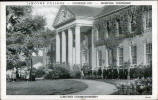 |
|
|
|
|
|
|
|
| |
|
|
Click on
small photos to see a large photo... |
|
| |
| |
| |
|
|
|
Le Moyne
Normal and Commercial School |
|
|
 |
LeMoyne Normal and Commercial School opened officially in
1871, but it actually began in 1862 when the American
Missionary Association (AMA) sent Lucinda Humphrey to open
an elementary school for freedmen and runaway slaves in
Camp Shiloh soon after the occupation of Memphis under
Ulysses S. Grant. In 1863 hat school moved to
Memphis and was known as Lincoln Chapel School. It
was destroyed by fire in the Memphis riots of 1866.*
The AMA immediately sent $10,000 to rebuild the school, and
it reopened in 1867 in a two story
building with 4 classrooms and 150 students and 6
teachers. Two years later it had 2,000 pupils in
spaces designed for 150. And - the small school had
severe financial problems. |
| L,
Humphrey |
|
|
|
|
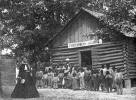 |
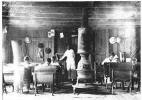 |
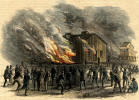 |
 |
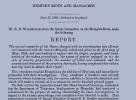 |
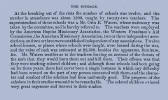 |
|
Freedman's School 1864 |
Typical Interior |
*Memphis Riots 1866 |
*The
"Cause" |
*The
Report |
*The
Schools |
|
|
In 1870, Dr. Francis J. LeMoyne, a Pennsylvania doctor,
donated $20,000 to the American Missionary Association to
build an elementary and secondary school for prospective
teachers. He also donated a clock for the school's
tower. In 1871, the school opened in a new building
at 284 Orleans Street and was named LeMoyne Normal and
Commercial School. The building had cost $9,000,
leaving $11,000 as an endowment. The first years were difficult as
the yellow fever epidemic took its toll on school
personnel, but under the leadership of the 3rd principal,
Andrew J. Steele, the institution experienced three
decades of rapid growth and development. |
 |
| |
F. J. Le Moyne |
|
|
|
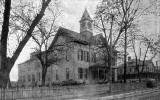 |
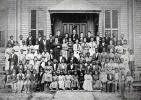 |
 |
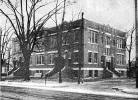 |
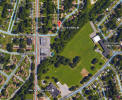 |
| LeMoyne
with Clock Tower |
LeMoyne Class 1871 |
A. J.
Steele |
The
New School |
Original Location |
|
|
|
|
|
|
|
|
|
|
|
|
There were three divisions at the school: The normal
school for teachers, a commercial department, and a music
department. The first two diplomas were granted in
1876. In 1901 a high school was added to prepare
students for the normal school course.
In 1914 the school moved from 284 Orleans Street to its
present location on Walker Avenue. The first
building, Steele Hall, was erected on the new campus.
|
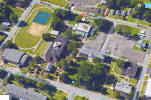 |
| |
Location Today |
|
|
|
|
LeMoyne became a junior college in 1924, and a four-year
college in 1934, when the name was changed to LeMoyne
College. By this time, LeMoyne had strong
debating and football teams which helped the school gain
name recognition. Hollis F. Price became LeMoyne's
first black president in 1943 . |
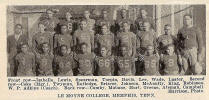 |
| |
1930
Football Team |
|
|
|
 |
 |
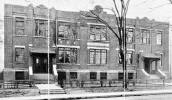 |
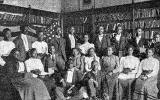 |
 |
|
1873
Article |
1876 Article |
Steele Hall |
1900 Class |
1908 Staff |
|
|
|
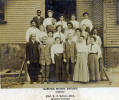 |
 |
 |
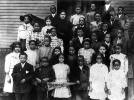 |
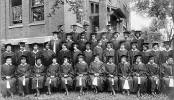 |
| 1908 Class |
L.T.
Larsen |
L.T.
Larsen article |
1910
Class |
Last
Junior Class |
|
|
|
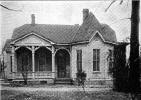 |
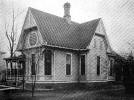 |
 |
 |
 |
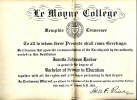 |
|
Principal's House |
Teacher's House |
Hollis
F. Price |
1939
Article |
1947
Article |
1963
Diploma |
|
|
|
|
|
|
|
|
|
|
|
|
|
|
|
|
LeMoyne Bulletin 1883-84:
The
school consists of Normal, Grammar, Intermediate, and Primary
Departments "...to give a thoroughly practical English
education, and to prepare teachers for the public schools.
...using the best methods of presenting each subject; so that
when a pupil shall have mastered a lesson, he shall not only
be familiar with the principles therein treated, but shall
also have some clear and well-defined ideas how they may be
successfully taught to others." |
|
|
|
|
|
|
|
|
|
|
|
|
 |
Maj. General Ulysses S.
Grant appointed John Eaton superintendent of freedman
where he supervised all military posts from Cairo to
Natchez and Fort Smith. In 1863 Grant appointed him
as the Superintendent of Negro Affairs for Tennessee
and there Eaton supervised the establishment of 74
schools. In 1863 Eaton was made colonel of the 63rd
United States Colored Infantry. After the Civil War
he became editor of the Memphis Daily Post. From
1867-69 he was the state superintendent of schools of
Tennessee. In 1870 he was appointed United States
Commissioner of Education. |
| John
Eaton |
|
|
|
. |
|
In
1871, J. H. Barnum had been principal of LeMoyne College.
In 1873 he became principal of Clay Street School, the first
Black BRICK public school in Memphis. Shortly
afterwards, in 1874, he was named the first Superintendent of
Memphis Colored Schools. Than tenure didn't last long because of
conflicts with the white school board and he was replaced by
B. K. Sampson in 1875. The "Conflicts"??? Barnum
wanted to replace the white teachers with black teachers
at the "Colored" schools. |
 |
| |
J. H.
Barnum |
|
|
|
|
|
|
|
|
|
|
|
|
The
Howe Institute |
|
|
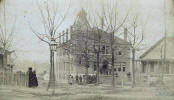 |
The Howe Institute was founded in 1888 by Peter Howe of
Illinois. It was originally called the Memphis
Baptist and Normal Institute and was one of the earliest
private educational facilities for African Americans in
Memphis. In 1902 Thomas O. Fuller was named
principal and under his leadership the school grew by
leaps and bounds. There were five buildings on campus
- the original Howe Building, then an Industrial Shop,
which gave space for the printing and sewing departments,
and then a Teacher's College building along with the Clara
Howe Dormitory for girls. |
|
|
|
|
But
the Howe Institute had no endowment and relied on support from
tuitions and donations, so there was always a struggle.
Howe sold its buildings and merged with LeMoyne College in
1937. |
|
|
|
|
|
|
 |
During his tenure,
Reverend Fuller sought to improve the lives of African
Americans by fostering a sense of black pride and
stressing the importance of education. Under his
leadership, the Howe Institute grew in student population
and in additional buildings. In the beginning of the
twentieth century, the Howe Institute was one of the few
schools in Memphis to offer education to blacks above
grammar school. Originally appointed as the interim
principal until the Institute could find someone to fill
the position full time, Fuller's "arrangement" lasted
twenty-seven years. T. O. Fuller State Park is named
for him. |
| T. O.
Fuller |
|
|
|
|
|
|
|
|
 |
 |
 |
 |
 |
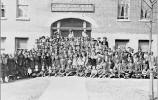 |
| |
< =
1910 Article by Thomas O. Fuller = > |
|
1900
Class - Clara Howe Bldg |
|
|
|
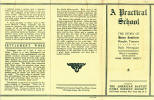 |
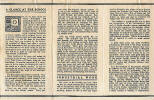 |
 |
 |
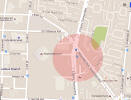 |
|
1909 Brochure |
1909
Brochure - continued |
Commencement |
1908
Staff |
Howe
Location |
|
|
|
 |
|
|
|
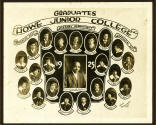 |
|
Fuller-1925 |
|
|
|
Howe Jr College-1925 |
|
|
|
|
|
|
|
|
|
|
|
|
Owen
College |
|
|
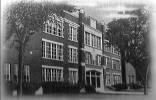 |
Owens College began in 1947, when the Tennessee Baptist
Missionary and Educational Convention bought property on
Vance Avenue to build a junior college. After
several years of planning, the school opened in 1954 as S.
A. Owen Junior College, named in honor of a distinguished
religious and civic leader. The name was later
changed to Owen Junior College. The merger of Owen
and LeMoyne Colleges in 1968 joined two religious
traditions at the same time that it reinforced the
institutions shared purpose of combining a liberal arts
education with career training in a Christian setting. |
| 1954
Owen College Admin |
|
|
|
|
|
The two-year liberal arts college offered associate
degrees in general education, business, home economics,
religious education, and secretarial science. It
also offered a training program leading to a certificate
in adult education. There were late afternoon and
evening classes, as well as special classes for adults
below college grade. Some students chose the
terminal program, but the majority selected the transfer
program, and after graduating, they entered four-year
colleges such as Rust, Lane, Howard, LeMoyne, and
Tennessee State. |
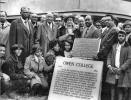 |
| |
2012
Marker Dedication |
|
|
|
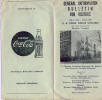 |
|
|
|
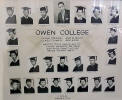 |
| Owen
College 1957 |
|
|
|
Owen
College 1959 |
|
|
|
|
|
|
|
| The 1960
Sit-ins |
|
| |
|
|
A small group of LeMoyne College and Owen Junior College
students organized sit-ins on March 18, 1960. They
first targeted the main public library, where 40 students
sat at tables, and then the protests spread to the Memphis
department stores. More than 300 demonstrators were
arrested on charges of loitering. Ten local lawyers,
representing the NAACP were able to get most of the
charges dropped.
The
Protests in Memphis continued throughout the summer of
1960. These protests resulted in the integration of
buses and the city's parks. |
 |
| |
1960 sit- in |
|
|
|
|
|
|
|
|
|
|
LeMoyne-Owen College ...today |
|
|
|
Today LeMoyne-Owen College occupies a fifteen acre campus in
Memphis. Recent statistics show the school's enrollment
to be around 700 students from 15 states and five foreign
countries. There are approximately 70 full time faculty
members. LeMoyne is fully accredited by the Southern
Association of Colleges and Schools, and is a charter member
of the United Negro College Fund. The school offers
bachelor of arts, bachelor of business administration, and
bachelor of science degrees in 22 majors. The college is
on a semester schedule and serves both resident and
non-resident students. Approximately 25% of the student
body lives in on-campus housing. |
|
|
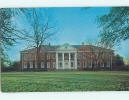 |
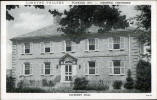 |
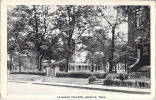 |
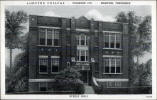 |
| 1980
Brownlee Hall |
Sweeney Hall |
Vintage Postcard |
Steele
Hall |
|
|
|
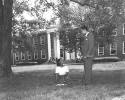 |
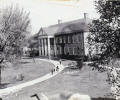 |
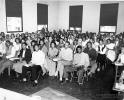 |
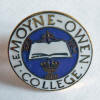 |
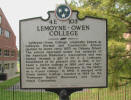 |
| Students
on Campus |
Campus |
Classroom |
Vintage Button |
Marker |
|
|
|
|
|
|
|
|
|
|
|
|
|
|
|
|
Credits |
|
|
|
The
Historic-Memphis website does not intentionally post copyrighted
photos and material without permission or credit.
On
occasion a "non-credited" photo might possibly be posted because we
were unable to find a name to give credit. Because of the nature of
our non-commercial, non-profit, educational website, we strongly
believe that these photos would be considered "Fair Use. We have
certainly made no monetary gain, although those using this website
for historic or Genealogy research have certainly profited. If by
chance,
we have posted your copyrighted photo, please contact us, and we'll
remove it immediately, or we'll add your credit if that's your
choice. In the past, we have found that many photographers
volunteer to have their works included on these pages and we'll
also do that if you contact us with a photo that fits a particular
page. |
|
|
|
The "Historic-Memphis" website would like to acknowledge and thank the
following for their contributions which helped make this website
possible: Memphis
Public Library, Memphis University Library, Memphis Law Library,
Memphis Commercial Appeal, Memphis Press Scimitar, Shelby County
Register of Deeds, Memphis City Schools, Memphis Business Men's
Club, Memphis Chamber of Commerce, Memphis City Park Commission,
Memphis Film Commision, Carnival Memphis, Memphis Historical
Railroad Page, Memphis Heritage Inc, Beale Street Historic District,
Cobblestone Historic District, Memphis Historic Districts, Vance
Lauderdale Family Archives, Tennessee State Archives, Library of
Congress, Kemmons Wilson Family, Richard S. Brashier, Lee Askew,
George Whitworth, Woody Savage and many individuals whose assistance is
acknowledged on the pages of their contributions. Special
thanks to Memphis Realtor, Joe Spake, for giving us carte blanche
access to his outstanding collection of contemporary Memphis photos.
We do not have high definition copies of the photos on these
pages. If anyone wishes to secure high definition photos,
you'll have to contact the photographer or the collector.
(To avoid any possibility of contributing to SPAM, we do not
maintain a file of email addresses for anyone who contacts us). |
|
|
|
|
|
|
|
|
|
|
|
|
|
|
|
|
|
|
|
|
|